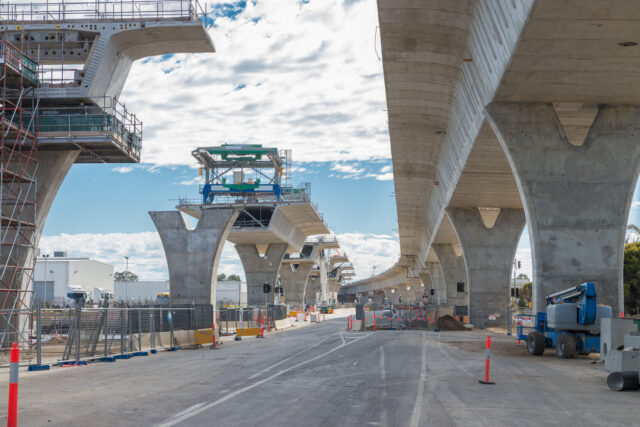Demand for infrastructure continues to outstrip supply in Australia even though the major public infrastructure pipeline for the next five years is down 8% on projections made 12 months ago. This is one of the findings in the 2024 Infrastructure Market Capacity Report from Infrastructure Australia released in January.
The report says the five-year pipeline out to the 2027-28 financial year is at $213 billion, which represents almost a quarter of Australia’s $1.08 trillion projected spend on construction activity.
Transport continues to be the dominant sector comprising $126 billion of the pipeline, followed by buildings at $71 billion, and utilities $16 billion.
Comparing the pipeline in 2024 against that from 2023, the transport pipeline is $32 billion lower than the previous year’s outlook, largely driven by the completion of several “megaprojects” in 2023-24.
The report also sees a “significant geographic shift” in investment to the north, with the pipelines of Queensland and the Northern Territory growing by A$16b while those for Victoria and New South Wales are down by $39 billion for the same period.
However, Australia’s infrastructure ambitions continue to be challenged by three key factors: skills shortages, stagnant productivity growth, and rising material costs.
The increased demand from the northern states, the report says, would “intensify local supply constraints, especially in regional areas where attracting skilled workers is challenging.” While the workforce shortfall has reduced, some shortages still persist.
The shortfall is estimated at 32,000 full time workers, and continues across each of the three occupational groupings: engineers scientists and architects, trades and labour, and project management professionals.
To address this shortfall, Infrastructure Australia chief executive Adam Copp commented we need to “attract new workers to the industry and retain the ones we have, government and industry need to address the underlying cultural issues that are holding productivity back and driving people, particularly women, away from a career in construction.”
“This should be an industry of choice, but the reality on the ground is it’s a harsh working environment—we see burnout, stress, and incredibly poor mental health and wellbeing.”
With respect to materials, the report notes it’s “difficult to source construction materials, plant and equipment due to their geographical distance, adding risk to on-time, on-budget project delivery” for the northern states.
In terms of budget specifically, the report found an “extraordinary escalation” in cost trends, particularly in non-labour resources.
Cost increases in the area of land transport infrastructure construction have increased by 51% since 2010-2011, with the escalation gaining momentum since 2021.
“Construction materials on average cost around 30% more than they did three years ago and with ongoing skills shortages we simply don’t have the people power we need to get the job done on time,” said Copp.
“Our analysis shows seven per cent of the pipeline, or $15 billion of planned construction work, has been hampered by project delays.”
The challenges of skills shortages and rising costs will need to be addressed as governments continue to work to resolve the country’s housing crisis and moves towards renewable energy.














